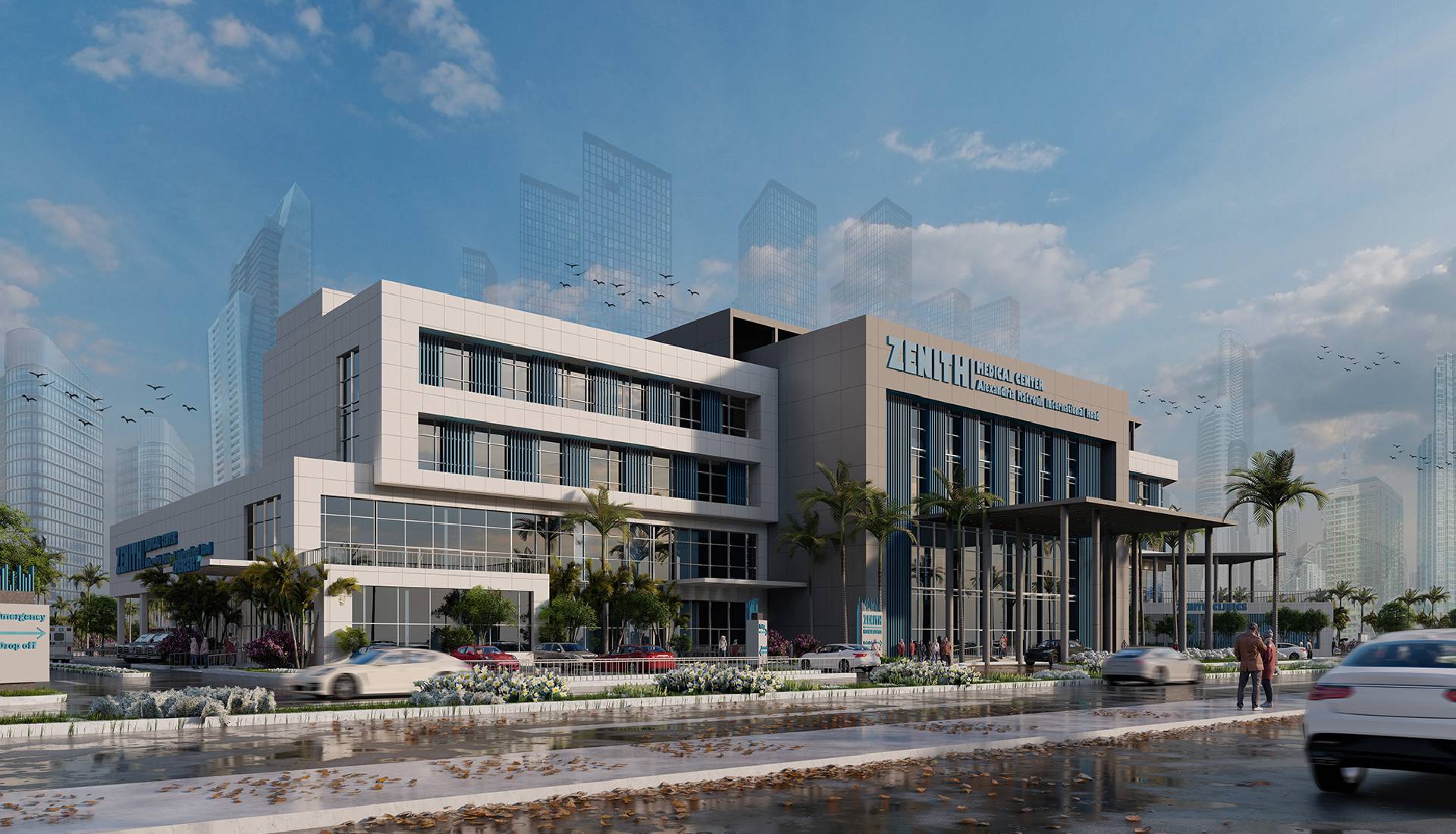
HOSPITAL DEISGN HUB Innovative Hospital Design Trends in Qatar: Building the Future of Healthcare
Innovative Hospital Design Trends in Qatar: Building the Future of Healthcare
In recent years, Qatar has emerged as a global leader in healthcare innovation, driven by its ambitious vision to enhance the well-being of its population and establish itself as a hub for medical excellence. As part of this mission, the country is investing heavily in the design and construction of state-of-the-art hospital facilities. These new hospitals are not only focused on providing cutting-edge medical care but also on creating environments that promote healing, efficiency, and sustainability. This article delves into the latest innovative hospital design trends in Qatar, showcasing how the country is building the future of healthcare.
| Headings | Sub-Topics |
|---|---|
| Introduction to Hospital Design in Qatar | Overview of Qatar’s healthcare infrastructure development |
| The Importance of Hospital Design in Healthcare | Impact of architecture on patient outcomes and staff efficiency |
| Sustainability in Hospital Design | Green building practices and energy efficiency |
| Patient-Centered Design | Creating healing environments that prioritize patient comfort and well-being |
| Integration of Advanced Technology | Smart hospitals and the use of AI, IoT, and robotics |
| Flexible and Adaptive Spaces | Designing hospitals that can evolve with changing healthcare needs |
| Cultural Sensitivity in Design | Incorporating Qatari cultural elements into hospital architecture |
| Community-Centric Healthcare Facilities | Hospitals designed to serve and engage with local communities |
| Safety and Infection Control | Innovations in hospital design to prevent infections and enhance safety |
| Biophilic Design Elements | Incorporating nature into hospital environments for improved patient outcomes |
| Use of Natural Light and Space Optimization | Enhancing well-being and energy efficiency through design |
| Innovative Use of Materials | New construction materials that improve sustainability and durability |
| Designing for Staff Efficiency | Creating workspaces that support healthcare professionals’ well-being and performance |
| Hospital Design and Mental Health | Spaces designed to support the mental health of patients and staff |
| Emergency and Disaster Preparedness | Designing hospitals to withstand natural disasters and emergencies |
| Focus on Pediatric Care Facilities | Specialized design considerations for children’s hospitals |
| Integration of Research and Education Spaces | Combining clinical care with research and training facilities |
| The Role of Art and Aesthetics in Healing | Incorporating art and design to enhance the healing process |
| Collaborative Design Process | Involving stakeholders in the design and planning of hospital facilities |
| Future Trends in Hospital Design | What’s next in the evolution of hospital architecture in Qatar? |
Introduction to Hospital Design in Qatar
Qatar’s journey toward becoming a leader in healthcare innovation has been marked by significant investments in its medical infrastructure. Over the past decade, the country has prioritized the construction of modern hospitals and healthcare facilities that not only meet the highest international standards but also reflect the unique cultural and environmental context of the region. As Qatar aims to provide world-class healthcare to its citizens and residents, the design of these facilities plays a crucial role in achieving this goal.
The government’s commitment to enhancing healthcare services is evident in the numerous projects currently underway, including the construction of new hospitals and the renovation of existing ones. These projects are guided by the principles of innovation, sustainability, and patient-centered care, ensuring that Qatar’s healthcare infrastructure is equipped to meet the challenges of the future.
The Importance of Hospital Design in Healthcare
Hospital design is more than just an aesthetic consideration; it is a fundamental aspect of healthcare delivery that directly impacts patient outcomes, staff efficiency, and overall hospital performance. A well-designed hospital can significantly enhance the patient experience by creating an environment that supports healing, reduces stress, and promotes comfort. For healthcare staff, thoughtful design can lead to increased efficiency, reduced fatigue, and improved job satisfaction.
In Qatar, the focus on hospital design is driven by the understanding that architecture and layout can influence various aspects of healthcare, from infection control to the integration of advanced technologies. As a result, architects, designers, and healthcare professionals are working closely together to create spaces that not only meet clinical requirements but also contribute to the overall well-being of patients and staff.
Sustainability in Hospital Design
As global awareness of environmental issues grows, sustainability has become a key consideration in hospital design. In Qatar, where environmental challenges such as extreme heat and water scarcity are prevalent, the need for sustainable building practices is even more critical. Hospitals in Qatar are increasingly being designed with green building principles in mind, focusing on energy efficiency, water conservation, and the use of environmentally friendly materials.
One of the most significant trends in sustainable hospital design is the incorporation of renewable energy sources, such as solar panels, to reduce the facility’s carbon footprint. Additionally, architects are prioritizing the use of natural light to minimize the reliance on artificial lighting, thereby reducing energy consumption. Water-saving technologies, such as low-flow fixtures and water recycling systems, are also being implemented to address the region’s water scarcity issues.
Sustainable design in hospitals not only benefits the environment but also enhances the patient experience by creating healthier indoor environments. Improved air quality, natural light, and the use of non-toxic materials contribute to a more pleasant and healing atmosphere, which can positively impact patient outcomes.
Patient-Centered Design
Patient-centered design is at the forefront of hospital architecture in Qatar, focusing on creating environments that prioritize the needs and comfort of patients. This approach involves designing spaces that are not only functional but also calming and welcoming, helping to reduce the stress and anxiety often associated with hospital visits.
One of the key elements of patient-centered design is the creation of private patient rooms, which offer greater privacy and reduce the risk of infection. These rooms are often equipped with amenities that allow patients to personalize their space, such as adjustable lighting, temperature controls, and entertainment systems. The design of common areas, such as waiting rooms and lounges, also reflects this patient-centered approach, with comfortable seating, natural light, and access to outdoor spaces.
Moreover, wayfinding is a critical aspect of patient-centered design. Clear signage, intuitive layouts, and easily navigable corridors help patients and visitors move through the hospital with ease, reducing stress and improving the overall experience. In Qatar, the integration of cultural elements, such as art and design motifs that reflect the local heritage, also plays a role in creating a comforting and familiar environment for patients.
Integration of Advanced Technology
The integration of advanced technology in hospital design is revolutionizing healthcare delivery in Qatar. The concept of “smart hospitals” is becoming increasingly prevalent, with new facilities incorporating cutting-edge technologies such as artificial intelligence (AI), the Internet of Things (IoT), and robotics to enhance patient care and streamline operations.
In a smart hospital, various systems are interconnected to improve efficiency and provide real-time data to healthcare providers. For example, IoT devices can monitor patients’ vital signs continuously, allowing for early detection of potential health issues and reducing the need for invasive procedures. AI-driven diagnostic tools can assist doctors in making more accurate diagnoses, while robotic surgery systems enable minimally invasive procedures with greater precision.
Moreover, the use of electronic health records (EHR) and telemedicine platforms is becoming more widespread, allowing for seamless communication between different departments and facilitating remote consultations. These technological advancements not only improve the quality of care but also enhance the overall patient experience by reducing wait times and increasing access to specialized services.
Flexible and Adaptive Spaces
The healthcare landscape is constantly evolving, and hospitals must be designed to adapt to changing needs and technologies. In Qatar, the concept of flexible and adaptive spaces is being embraced to ensure that new hospital facilities can accommodate future advancements in medical care without requiring extensive renovations.
Flexible hospital spaces are designed with modularity in mind, allowing for easy reconfiguration of rooms and departments as needed. For instance, patient rooms can be converted into intensive care units (ICUs) during times of high demand, or operating theaters can be adapted to accommodate new surgical techniques. This adaptability is crucial in ensuring that hospitals remain functional and relevant as healthcare needs change over time.
In addition to modular design, flexible spaces often incorporate movable walls, adaptable furniture, and advanced infrastructure that can support new technologies. This approach not only maximizes the utility of the space but also helps reduce costs associated with future renovations or expansions.
Cultural Sensitivity in Design
Qatar’s rich cultural heritage plays a significant role in the design of its hospitals, with architects and designers striving to create spaces that reflect the values and traditions of the local community. Cultural sensitivity in hospital design involves incorporating elements that resonate with the Qatari people, such as traditional architectural motifs, color schemes, and materials.
Incorporating cultural elements into hospital design not only helps create a sense of familiarity and comfort for patients but also reinforces the connection between the hospital and the community it serves. This cultural integration is evident in various aspects of hospital design, from the layout of public spaces to the selection of artwork and decorative features.
For example, many hospitals in Qatar feature prayer rooms and quiet spaces that cater to the spiritual needs of patients and visitors. Additionally, the design of waiting areas and common spaces often includes traditional Qatari patterns and colors, creating a welcoming environment that resonates with the local population.
Community-Centric Healthcare Facilities
In Qatar, the design of healthcare facilities is increasingly being approached with a focus on serving the broader community. Community-centric healthcare facilities are designed to be more than just places for medical treatment; they are envisioned as hubs for health and wellness, offering a range of services and amenities that cater to the needs of the local population.
These facilities often include spaces for health education, wellness programs, and community events, helping to promote a culture of health and well-being.




